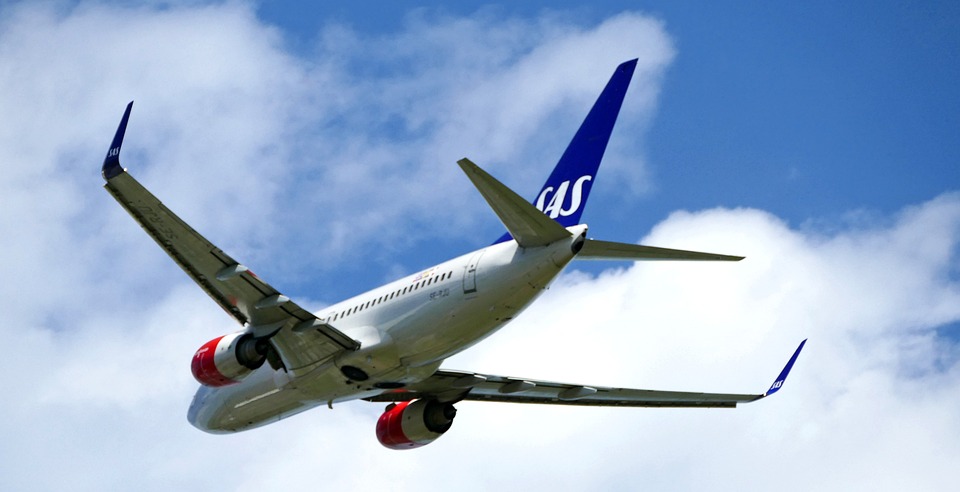Summary:
A Scandinavian Airlines (SAS) flight from Stockholm to Miami was forced to turn around and return to Europe after experiencing extreme turbulence over Greenland. Dramatic footage from inside the aircraft captured the terrifying conditions that left passengers screaming and the cabin strewn with debris. Despite the frightening ordeal, no serious injuries were reported.
Introduction: SAS Flight Faces Extreme Turbulence Over Greenland
On Thursday, November 14, 2024, a Scandinavian Airlines (SAS) flight en route from Stockholm, Sweden, to Miami, Florida, was forced to turn back after experiencing severe turbulence over Greenland. The incident, which occurred at approximately 30,000 feet above the North Atlantic, has raised concerns over passenger safety during transatlantic flights, especially in regions known for unpredictable weather patterns.
The flight, which had 254 passengers aboard, was cruising at high altitude when the aircraft encountered what has been described as “extreme” turbulence. Dramatic video footage recorded by a passenger inside the plane shows the chaotic scene, with passengers visibly shaken, screaming, and unsecured items flying through the cabin as the turbulence intensified.
The Turbulence Incident: What Happened on Board
According to the airline and reports from the passengers, the turbulence struck suddenly and with little warning. Passenger video footage, which has circulated widely on social media, shows the cabin in disarray, with overhead compartments bursting open and personal belongings scattered across the aisle. Some passengers are seen visibly frightened, with one even shouting in fear as the plane rocked violently.
The turbulence occurred over Greenland, a region known for rapidly changing weather conditions due to its unique geography. While turbulence is a common occurrence during flights, particularly at high altitudes, the severity of this event caused significant distress among those on board.
“I’ve never experienced anything like this before,” said one of the passengers, who wished to remain anonymous. “It felt like the plane was dropping, and then suddenly there was just chaos. People were screaming, and things were flying everywhere.”
Flight Details and Emergency Response
The aircraft, a Boeing 787 Dreamliner, was about 7 hours into its flight when the turbulence struck. In response to the severe conditions, the flight crew immediately made the decision to return to Stockholm Arlanda Airport rather than continue on to Miami. After alerting air traffic control, the plane was diverted, and it safely landed back in Sweden later that evening, nearly five hours after its original takeoff time.
No serious injuries were reported, although several passengers suffered minor cuts and bruises from flying debris and unsecured items. The airline confirmed that all passengers were safely deplaned once the plane arrived back at Stockholm, and those needing assistance were provided with medical care and compensation.
Scandinavian Airlines issued a public statement following the incident, expressing their commitment to passenger safety. “We take this event very seriously and are conducting a thorough investigation into what happened,” the airline said in the statement. “We would like to reassure our passengers that we are doing everything possible to support them after this unsettling experience.”
Understanding Extreme Turbulence: What Causes It?
Turbulence occurs when a plane flies through air currents that cause the aircraft to experience sudden and unpredictable movements. Clear air turbulence (CAT), which is what likely caused this incident, is one of the most difficult types of turbulence to predict. It typically occurs at higher altitudes, often near jet streams, and can catch both pilots and passengers off guard.
In this case, the turbulence over Greenland may have been influenced by the region’s geography, where cold air from the Arctic meets warmer air masses, creating unstable atmospheric conditions. This can lead to sudden and powerful updrafts or downdrafts, which can shake an aircraft even at cruising altitude.
Though turbulence is a normal part of air travel, incidents involving extreme turbulence can be particularly frightening, especially if they result in injuries or significant passenger distress. While commercial aircraft are designed to withstand turbulence, the force of the air currents can still be powerful enough to cause discomfort or damage to unsecured items inside the cabin.
Passenger Experience and Reactions
The extreme turbulence and its aftermath left passengers shaken. Some described feeling as though the plane was descending quickly, while others spoke of the disorienting feeling of weightlessness as the plane jolted in mid-air. In addition to the panic that ensued, passengers who were not fastened into their seats when the turbulence hit were at risk of injury from flying objects.
“The plane was shaking so much that I had to hold onto my seat,” said another passenger. “It felt like we were free-falling for a few moments. I don’t think I’ve ever been that scared in my life.”
While no fatalities or major injuries were reported, the incident serves as a reminder of the unpredictability of air travel. Passengers have since praised the professionalism of the crew, who managed the emergency situation and kept the passengers informed and calm during the ordeal.
Airline Safety Protocols and Preventative Measures
In response to the incident, aviation experts have stressed the importance of adhering to safety protocols, particularly regarding seatbelt use during flights. Passengers are encouraged to keep their seatbelts fastened whenever seated, even when the seatbelt sign is off, as turbulence can strike unexpectedly.
The International Air Transport Association (IATA) has also emphasized the importance of predictive technology to help pilots identify turbulence risks ahead of time. Several modern aircraft are equipped with weather radar and other systems designed to detect turbulence, but clear air turbulence remains a challenge due to its unpredictability.
The Bigger Picture: Increasing Turbulence Incidents and Aviation Safety
While incidents of extreme turbulence are relatively rare, they have been increasing in recent years, partly due to changes in global weather patterns linked to climate change. As air temperatures rise, turbulence caused by jet streams and atmospheric instability is expected to become more frequent and intense, making it a growing concern for the aviation industry.
In light of these changes, airlines are focusing on improving technology for early turbulence detection and enhancing crew training to better handle these situations. Passenger safety remains a priority for all carriers, but turbulence continues to be one of the most challenging aspects of air travel.
Conclusion: A Frightening Incident, but No Serious Injuries
While the extreme turbulence experienced by the Scandinavian Airlines flight from Stockholm to Miami was a terrifying ordeal for passengers, it serves as a reminder of the inherent risks of air travel. Thanks to the professionalism of the crew and the resilience of the aircraft, the plane safely returned to Stockholm without any major injuries.
The incident highlights the importance of safety protocols and the unpredictable nature of turbulence, particularly in regions with rapidly changing weather conditions like Greenland. With increasing awareness of the risks associated with turbulence, both airlines and passengers must remain vigilant to ensure the continued safety of air travel.
References:
- Scandinavian Airlines (SAS) – Official statement on the incident.
- Federal Aviation Administration (FAA) – Guide on clear air turbulence and its effects on aviation.
- International Air Transport Association (IATA) – Safety measures for turbulence and aviation risk management.
- National Weather Service – Overview of atmospheric conditions and turbulence formation.
- European Union Aviation Safety Agency (EASA) – Safety procedures during turbulence events.



